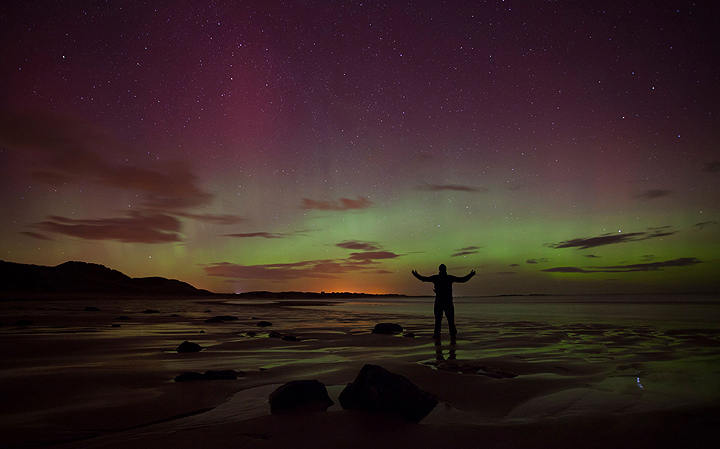Do we live in a great country or what? Canadians get yet another chance to see the northern lights Monday night.

The Space Weather Prediction Center (SWPC) out of the U.S. has issued a strong geomagnetic storm watch for Nov. 2-3. This means that, if their forecast is correct, the skies might erupt in beautiful colours as auroras light up the sky.
READ MORE: What gives the northern lights their colour?
Often, we get to see the northern lights following a coronal mass ejection, when particles from the sun are rapidly pumped out into space and carried along the solar wind, reaching Earth and interacting with our geomagnetic field. However, this time, it’s a coronal hole that’s responsible for the possibility of increased activity.
A coronal hole is an area of the sun’s outer atmosphere, called the corona, that has a lower temperature and density than the surrounding area. These holes can unleash a fast stream particles, that, like coronal mass ejections, are carried along the solar wind. If Earth is in the path of the stream, the particles interact with our magnetic field and trigger auroras.
So how good are our chances?
First, you need clear skies, of course. You can check out the weather for your area using our new SkyTracker app.
Also, the darker your location, the better chance you have of seeing even the faintest colour in the night sky.
But even if you have clear and dark skies, the magnetic field has to play along.
READ MORE: Why do we get the northern lights?
The SWPC is all about scales. First, there’s the Kp index which measures the strength of geomagnetic activity. It runs from 1 to 10. Typically, in moderately dark skies, you need a 5 or a 6 to see any colours with the naked eye (your camera can pick up colour lower than that).
Now for the second scale: The geomagnetic storm scale. This runs from G1 to G5 (weakest to strongest). The SWPC is forecasting a G3 geomagnetic storm, which corresponds to a Kp index of 7. So you can see that the storm should produce something. In fact, with a G3 warning, auroras can be expected to dip into the northern United States, such as Illinois.
And yes, this does cause some interference with satellites and radio, but nothing that you are likely to notice.
In order to see the northern lights, the auroral hole — a donut-shaped hole over the north pole — has to dip south. But the hole tends to move constantly, so at one time or another it is sure to dip south, if not remain there for a time.
So, tonight, be sure to keep an eye on the Kp index. So far it’s been low, with just a Kp 3, but it’s likely to surge. Also, check here, the 30-minute aurora forecast by the SWPC.
And don’t forget: you get the added treat of a meteor shower.




Comments